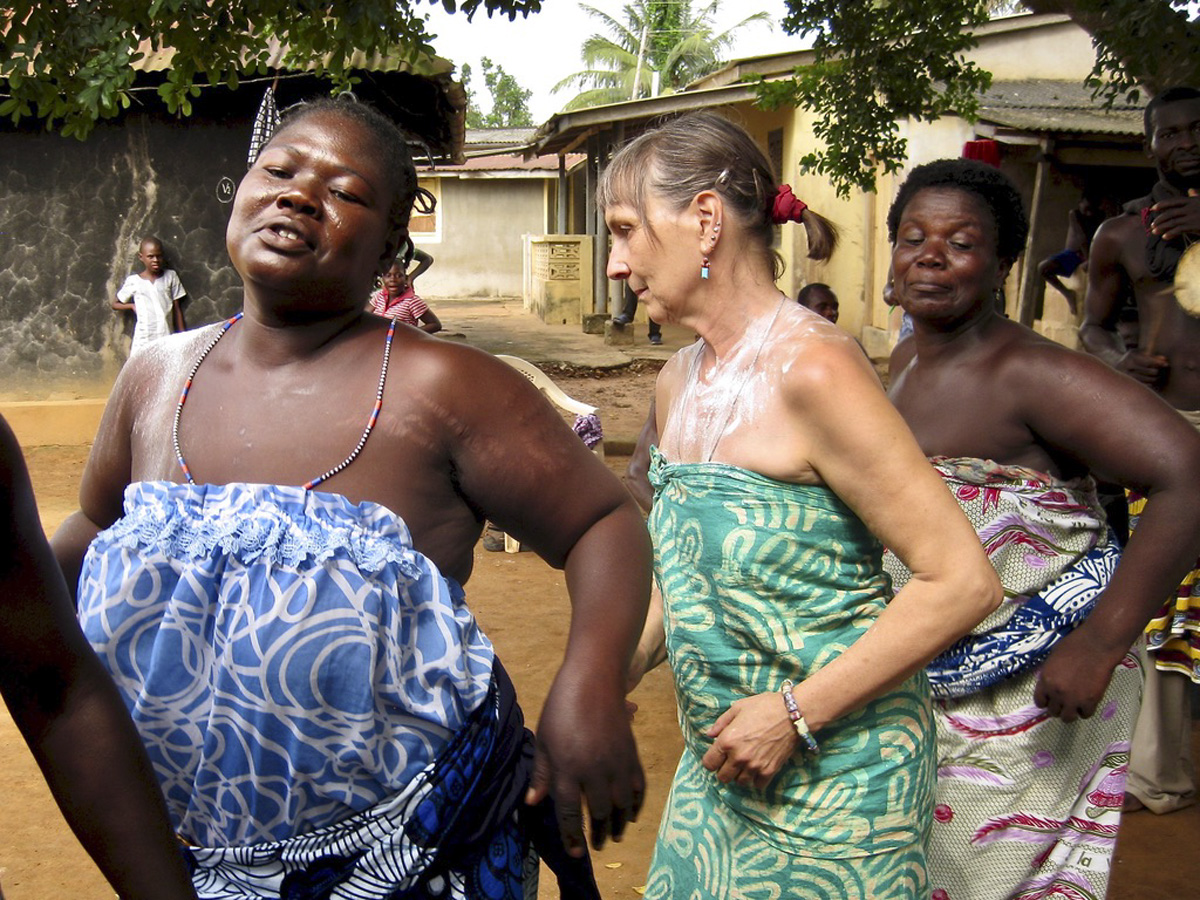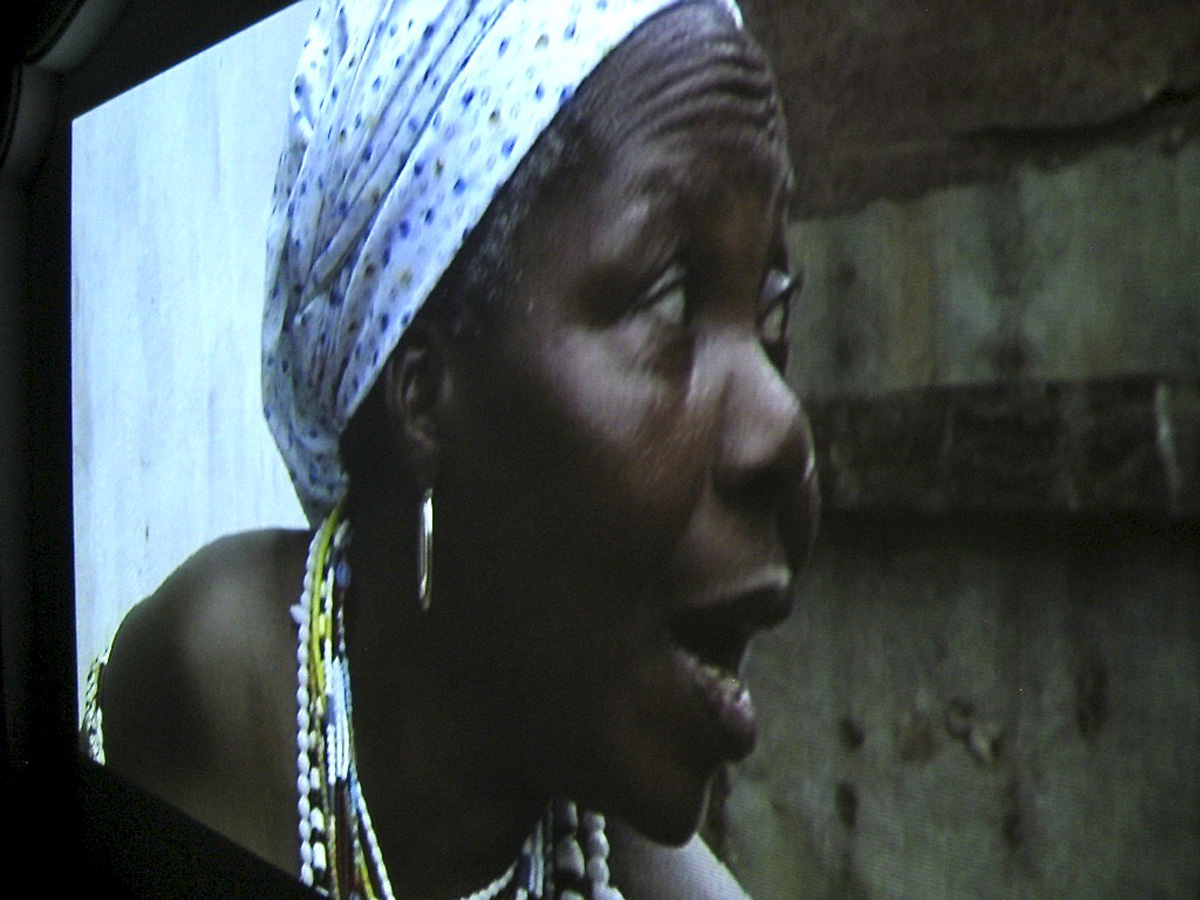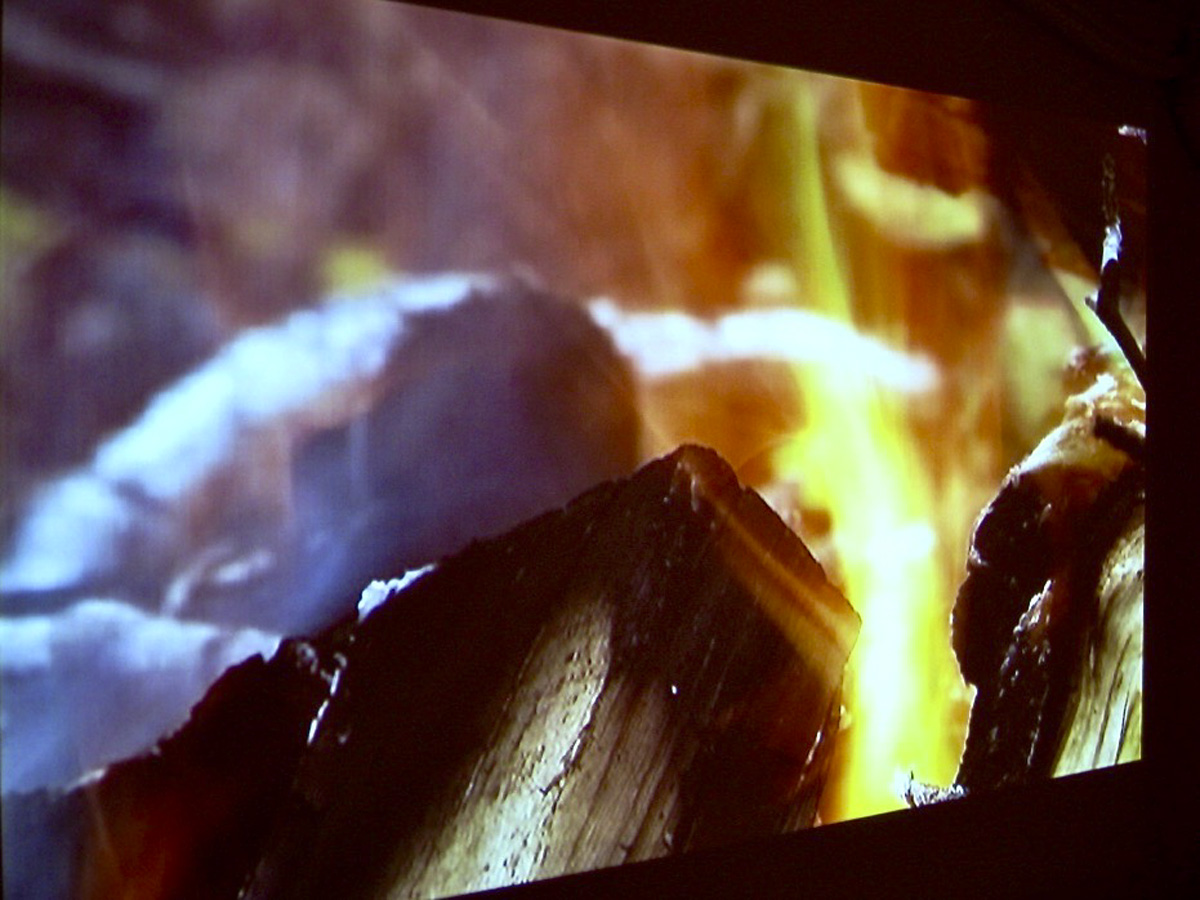Jill Flanders Crosby's Performance Based Videos

My individual artistic contribution to this installation is a video format that I call Performance-Based Video. For me, this format expands the possibilities of movement composition and structure by literally pushing the boundaries of dance -- motion, rhythm, form and gravity -- beyond what can be captured on stage.
As a dance researcher, not only have I danced at ritual ceremonies in West Africa and Cuba, but I have spent significant time behind the camera lens in the field, a process that is the catalyst for my current artistic direction. During my years of fieldwork, I examined underlying aesthetic groundings of the dances I danced and witnessed, examined gestures and processes of ritual, and I examined themes resonant and shared in various elder oral history interviews. I drew upon these, not for the re-creation of these dances, but as source material and inspiration for new movement invention and for thematic movement ideas for film.



Jill Flanders Crosby dancing with women of Dzodze, images by Brian Jeffery
As a dancer and choreographer, this project is an evocative new direction as it pushes me past old artistic boundaries and definitions of dance. It has encouraged me to explore dance from new perspectives; to be a contemporary artist inspired by tradition. I have been moved by the stories that ground the dances of those I have danced beside. And I have been moved by the efficacy of ritual dance. Yet what I create is not a copy, it is not even an alteration of existing traditional dances. It is new movement invention influenced by conceptual structures of ritual practices.

Jill Flanders Crosby with women of Dzodze, Ghana in 1991.
Importantly, as an artist-researcher, I, as well as the rest of the creative team behind this project embrace what we call art-as-ethnography; a blurring of boundaries that produce "productive tensions" (Elliott and Culhane 2017) agitating rather than defending disciplinary borders. We view art-as-ethnography as relevant to ethnographers, historians, and documentarians who play at the edges of scholarship and art-making. It especially aims at arts-makers who conduct historical and ethnographic research and transform that research into artistic presentations and performances.
Elliot, Denielle, and Dara Culhane, eds. 2017. A Different Kind of Ethnography: Imaginative Practices and Creative Methodologies. Toronto: University of Toronto Press.
About the Secrets Under the Skin Performance-Based Videos
The original idea for the Performance-Based Videos was first conceived while I was witness to a religious ceremony in Nogokpo, Volta Region, Ghana. Deeply moved, I began to imagine how the images of that day could be re-imagined as contemporary choreography. Then in December 2008, Melba Núñez Isalbe, Roberto Pedroso García and I were riding back from Perico late one night in a friend's VW van on our way back to Havana. Roberto and I were singing at the top of our lungs to a contemporary rock CD when we began to extrapolate Arará gestures to this contemporary music. We started giving them a new voice as we played with them in different combinations and movement pathways. It was this night that my Performance-Based Videos began their own journey.



I worked with Progressive Media Alaska and with colleague Brian Jeffery to film segments of contemporary movement material I created in response to field experiences. The first performance in the spring of 2009 was live choreography performed at the University of Alaska Anchorage in front of three screens filled with edited fieldwork images. This performance was filmed for eventual integration into the Performance-Based Videos. Additional material was filmed later that year in Cuba. In the summer of 2010, Brian Jeffery and I traveled to Ghana and Togo to finish the filming process. We worked together to conceive and create conceptual images that could support identified thematic ideas. We then expanded these ideas with dancers from the Ghana Dance Ensemble. Edited portions of all contemporary material were integrated with edited fieldwork recordings from Ghana, Togo, and Cuba to create four separate films segments. Each segment drew inspiration from one of the four elements (water, air, earth, and fire) as an organizing visual and conceptual metaphor.
| Film Credits for Performance Based Videos Water, Air, Earth, & Fire. | |
| Lead Editor & Post-Production Manager: Brandon McElroy |
|
| Conceptual Creators: Jill Flanders Crosby Brian Jeffery Brandon McElroy |
Choreography and Movement Design: Jill Flanders Crosby |
| Additional Choreography and Movement Design: Brian Jeffery |
Additional Movement Design: Brandon McElroy |
| Video Production Management: Brandon McElroy & Progressive Media Alaska |
Creative Direction: Jill Flanders Crosby Brandon McElroy |
| Creative Direction Consultancy: Brian Jeffery Aron Johnson Marianne Kim |
|
| Videographers: | |
| Principal Field Footage Cuba: Brandon McElroy |
Field Footage Recording Ghana and Togo: Jill Flanders Crosby Brian Jeffery |
| Studio Footage Recording: Aron Johnson Brandon McElroy Dylan Smith |
Live Performance Video Recording: Directed & Produced by: Progressive Media Alaska Camera Operators: Editor: |
| Video Logging: Jill Flanders Crosby Aron Johnson Brandon McElroy |
Editing Direction: Jill Flanders Crosby Brandon McElroy |
| Assistant Editors: Aron Johsnon Dylan Smith |
Graphic Design:
Brandon McElroy
Aron Johnson
|
| Sound Design and Original Music: Nick Petumenos Paul Schauert |
Studio Audio Recording Anchorage: Roland H. Stearns |
| Singers: Chelsea Asmus Mari Hahn Mary Powell Luetta Robinson Waylon Waddell |
Post-Production Music Mixing Brandon McElroy |
| Performers: | |
| Cuba: Lazarita Angarica Roberto Pedroso García Jesusito Morales Luis Dubouchet William Angarica |
Alaska: Josh Grisham Noemia Howell Becky Kendall Josh Lee Heather Richardson Michelle Steffens Leslie Kimiko Ward |
| University of Ghana Ghana Dance Ensemble Dancers and Musicians:
Shaibu Idrisu Abdullai
Joseph Oko Adokwei Wisdom Agdedanu Christopher Ametefe Christopher Ametornyo Emmanuel Avornyo Willie Oi Diku Lydia Gyamfua Lesley Adjetey Klifio Ambrose Kuubeterzie Torgboi Mensah Charles Odoom Wisdom Zigah Malititi Ruhia Abubakari-Sadik
Abraham Addoteye Vicentia Ahadzigah Veronica Ametefe Rose Atsu Maclean Dery Joseph Effrim Mohammed Mutala Karim Osei Korankye Gifty Naadu Layea Jacquline Naawe Julius Yaw Quansah |
|
| University of Ghana Dancer: Kwadwo Afriyie Adomako Community members of Adjodogou Togo, Dzodze Ghana Agramonte and Perico Cuba |
Recording Equipment Provided by: Progressive Media Alaska |
Banner image photographed by Brian Jeffery









